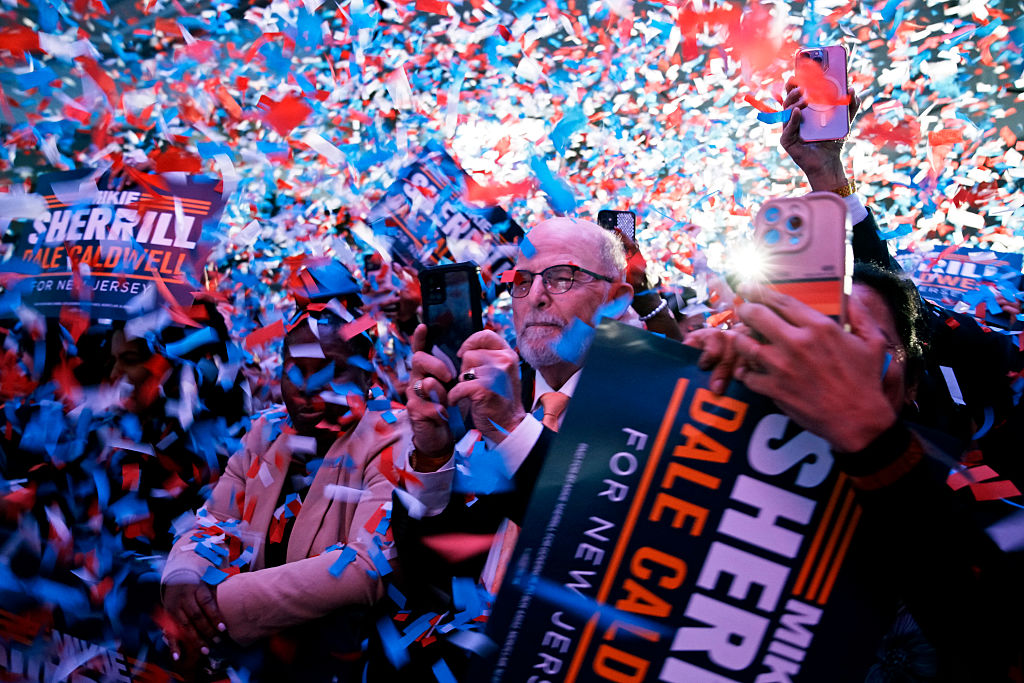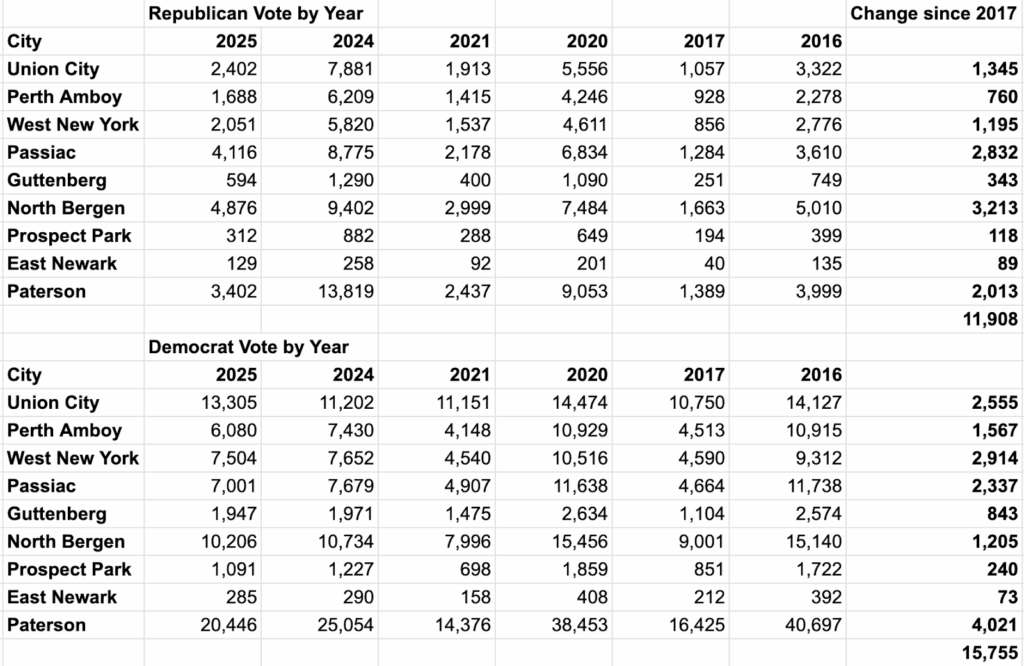New Jersey Is Still a Swing State in the Making
Despite a bad Tuesday, the numbers still show an upward trend for Garden State Republicans.

When you put together a campaign, part of your path to victory is guessing the electoral universe: how many votes it will take to win. This is barely an art and not at all a science, but you start by looking at past elections and political enthusiasm.
Now there are many external factors behind what causes campaigns to win or lose that are beyond a campaign’s control, for instance a pandemic that shuts down the country and changes the way people cast ballots, an economic recession around the housing market, or the backlash against a party controlling Congress and/or the White House in Washington that pushes forward unpopular bills on issues like healthcare.
What separates good campaigns from bad campaigns in such environments is whether they can manage either to localize the race to such a degree that they can break national headwinds (see Nassau County circa 2025) or to hit their target numbers to save some down-ballot races.
Jack Ciattarelli’s campaign for governor wasn’t perfect, but he assembled enough votes to win the governorship of New Jersey in any election since 1973—except for 2025.
Unlike Winsome Sears, who received more than 200,000 fewer votes than Glenn Youngkin, Ciattarelli received the most votes of any New Jersey Republican running for governor in a half-century. Unfortunately for the GOP candidate, for 1.8 million Jersey residents, his name might as well not have been on the ballot. They were out to vote against Donald Trump.
According to exit polls, 65 percent of respondents said that they were angry or dissatisfied with the direction of the country, 41 percent were voting to oppose Trump, and 55 percent said they disapproved of Trump.
To Ciattarelli’s credit, he won an overwhelming number of voters who said that this election wasn’t about Trump—by a near 2-to-1 margin—but it wasn’t enough for the army of former Harris voters who said that this election was a referendum on the president. Going into the election, four in 10 voters said they were coming out to vote against Trump, while only about one in 10 said they were casting a ballot to show they support him.
The Democrat Mikie Sherrill received 81 percent of Harris's vote, while Ciattarelli only won 70 percent of Trump’s raw vote total.
Ciattarelli had to deal with a tidal wave of enthusiastic Democrats who had just finished protesting the president at the “No Kings” rallies and believed they were saving democracy, swing voters who are angry over rising costs, and low-propensity conservatives, especially those registered as independents, who only come out during presidential years. It was too much for him.
Election day was not kind to Republicans in New Jersey or almost anywhere in the country, but that doesn’t mean the trajectory of where voters are leaning in New Jersey isn’t clear.
During Trump’s first full year in office, from January to election day in November, Democrats in New Jersey added 12,523 more new voters than Republicans in the Garden State. In the following year ahead of the midterms, they increased their voter registration advantage again by nearly 45,000 more new Democrats than Republicans. For those who are curious, independents shed 143,008 of their voters in 2017 and added 25,681 the following year.
While voter registration is a lagging indicator, it does show voter enthusiasm for belonging to a party during the year of Women’s March and amid subtle calls to execute the president coming from prominent celebrities like Madonna and Kathy Griffin. But the year that just passed showed no such momentum for Democrats leading to the enormous victory.
In fact, Democrats had a net loss of 8,626 members of their party during the last 10 months while Republicans gained 21,407 new enrollees. Independents once again lost an astounding 150,489 members.
Even in Latino-majority areas that swung to the left from 2024 to 2025, rolls show that Republicans’ raw vote growth in cities including Passaic, East Newark, and North Bergen is larger than Democrats’ since 2017. That’s about the same level of support the Republican gubernatorial nominee received compared to Trump’s raw vote total in those cities in 2017 and 2021.
Democrats have always done a better job at turning out voters in those Hispanic-majority cities, but unlike in 2017 and 2021, when the Democratic gubernatorial candidate received slightly less than 50 percent of the previous presidential candidate’s totals, Sherrill was able to retain an astounding 93 percent of Harris’ support from 2024.
Whether that is credited to anger over Trump’s ICE raids, anger spilled over from losing the White House, anxiety over the rising cost of living, or effective get-out-the-vote efforts on behalf of Mayor Brian Stack and the Democratic machine is up for anyone’s speculation.

Subscribe Today
Get daily emails in your inbox
Still, Democrats have yet to match their level of support that they received in these communities during the 2017 election, when Phil Murphy also received 56 percent of the statewide vote, and that’s in spite of Democrats turning out 90 percent of the Harris vote.

A lot can change between the gubernatorial elections and the midterms next year, but the current trajectory is clear. Republicans are making inroads in New Jersey, and 2025 will be just like 2001 and 2017: the first year after a Republican won the White House, when Democrats were energized, had high voter turnout, and won 56 percent of the vote.